By Garry Beuk. Published in Magazine Articles, Egyptological, 31st May 2012
Part 1
Introduction
“You see my father was an Egyptologist, you won’t know of him, Arthur Mace, he’s long forgotten.” These words were softly spoken by Margaret Orr, the daughter of Arthur Mace to a group of school children in 1989.
In this article, I will show that this is, sadly, an accurate statement regarding the general public’s lack of knowledge regarding Arthur Maces contributions to the field of Egyptology and more specifically to the science of artifact preservation. But why? How did a man who was so highly respected by his peers, and a principal member of Howard Carter’s famous excavation team, become virtually unknown just a few short years after his untimely death.
Early Life
Arthur Cruttenden Mace [figure 1] was born on July 17th 1874 in Hobart, the capital of the Australian island state Tasmania. Arthur’s mother, Mary Ellen Bromby, known as Minna, and father John Cruttenden Mace were upper middle class, High Church Anglicans. They were involved in the Oxford Movement, which was centered at the University of Oxford and sought to reinstate traditional Christian traditions within the Church of England. Their family connection with the Cardinal Newman allowed them to seamlessly move throughout the upper class social circles even though they lacked the financial resources attributed to this class in Victorian Britain.
In 1882 at the age of eight, Arthur and his family relocated to England with his grandfather Charles Henry Bromby (1814-1907). The move was made due to his grandfather’s retirement as the Bishop of Tasmania and his acceptance of an Assistant Bishop position in dioceses in Lichfield and later Bath and Wells.
Arthur’s mother provided a nurturing home life but she suffered from frequent illness requiring his older sister Hilda to care for him. His father’s struggles with managing money often left the family with little but their good name and they relied on the kindness of neighboring farmers and his mother’s needlepoint to sustain them. The lack of financial security may have been why, at the age of thirteen, Mace went to live with his Uncle Henry Bromby at St. Johns Vicarage, Bethnal Green.
His Uncle Bromby ensured that Arthur received a proper education. He excelled in his studies, enjoying the challenges of education and at the age of sixteen enrolled in St. Edwards School in Oxford. St. Edwards was a High Church public school ordained primarily for the sons of clergymen. It was known not only for its high level of instruction but it’s equally high level of discipline. The job of the instructors was to prepare the young men for a life of religious discipline and higher education. Mace embraced the instruction and his years at the school passed with relative ease. Finally, in 1893 Mace enrolled in Keble College, Oxford [figure 2] and obtained a degree as a teacher. This started him on the track to Egyptology, a path he never envisioned he would undertake.
Family Ties – Petrie
Graduation from Keble in 1895 did not bring Arthur a career of choice but rather one of necessity. Lack of money had afflicted the Mace family for many years and the responsibility for the education of a younger brother fell upon Arthur. This required him to accept a teaching position in Bath, primarily because it included with it reduced tuition fees for College family members. Mace quickly became disillusioned with teaching. Minna at first attempted to encourage him to remain in his position writing “you will soon fit into your groove I expect and after all blessed be the drudgery” (Lee, 1992) but later relented and instead encouraged him to become ordained in a clerical career. In the end Mace did not bend to his mothers will. Life as a school teacher or Reverend, like his father would not be for him. Destiny had other plans for him and Egypt was calling.
In 1897 Mace went to work for his cousin, the great William Flinders Petrie [figure 3]. Mace and Petrie were distant cousins, some twenty years apart, related through Bishop Bromby. Whilst it is not know exactly how the connection was made, it is likely Mina had some involvement in his being offered an Assistant position with Petrie as she had remained in close contact with relatives in both Britain and Australia.
Mace’s first season was spent working for the Egyptian Exploration Fund at Denderah. Petrie brought together Mace, Norman de Garis Davies and David Randall-MacIver. Unfortunately no notes are known to have survived from their first season together. Petrie probably spent a great deal of time providing instruction in record keeping, dating, cataloguing and methods of interpretation. Mace was also instructed in photography, in which he quickly became proficient, and it was under Petrie’s critical eye that he would develop the skills of artifact preservation that would play such a pivotal role in his future success. Early on in his career in Egyptology Mace clearly impressed Petrie who stated that he “left the direction of the excavation largely to Mace.”(Lee, 1992)
The work centered on the temple of Dendera [figure 4] located on the east side of the Nile that the ancients had dedicated to the goddess Hathor. The temple as well as the ancient town and cemetery behind it had been virtually untouched by excavators at this time. The tunnels, tomb pits and mastabas of local rulers were meticulously worked over by Petrie’s team culminating in the discovery of the oldest known brick vaults. Camp life was typical of Petrie with food being in short supply and always a low priority. Mace records that his hunger became so extreme that he had to smuggle food into camp without Petrie’s knowledge.(Lee, 1992)
En route to Egypt in 1889 for his second season of excavating with Petrie, Mace traveled through Italy visiting Florence, Rome and Naples. It was here that he developed a passion for Italy and its attractions, galleries and museums. Mace was so enchanted with these picturesque surroundings that later in life when battling life-threatening illness, it was to Italy that he would return for consolation. But for now Hu, a modern name for what was in ancient times the capitol of the seventh Nome of Upper Egypt and the centre of the cult devoted to Bat, awaited his attention.
Hu is located between Denderah and Abydos, and it was here that Petrie hoped he would uncover enough archaeological evidence to complete his Sequence-Dating system which was based on prehistoric Egyptian pottery. In the end the team would discover over 150 new pottery shapes to add to the 750 that Petrie had previously compiled and a great deal of progress on sequence dating would be made. Mace was given even greater responsibility and assigned to excavate cemetery Y. The work was difficult as it was located next to a Coptic cemetery that Mace had to carefully avoid. In addition, many of the cemetery tombs had been plundered both in antiquity and in modern times.
Mace records a unique burial discovery in his excavation journal where he cites possible evidence to support the theory of human sacrifice in early dynastic Egypt; “There was one burial in ordinary position, and below him were two more skeletons in crouching position, the regular New Race style of burial. I think they must have been his servants or slaves buried with him to look after him in the next world; whether put to death for that purpose or not I don’t know. It looks rather like that.” (Lee, 1992) Despite the fact that the majority of the graves belonged to the poorest of people, Mace had a successful season, discovering a dagger belonging to King Sewadjenra of the fourteenth Dynasty. Mace felt that the unearthing of the dagger was the highlight of the season, but in addition discovered a beautiful stuccoed wooden coffin belonging to a servant of Queen Sit-hathor. The mummy discovered in the coffin wore a cloth mask and ivory wands had been placed in the coffin behind the head.
Mace continued to be assigned tasks that would enhance his skills at preservation, such as taking down and preserving delicate charcoal drawings completed on plaster from the walls of tombs at the grave site. He also preserved a delicate Roman mask and marked thousands of pieces of pottery as they were found, for Petrie to use in his continuing research. Although Mace learned a great deal under the guidance of Petrie he clearly held less regard for his wife Hilda, stating in a letter to his mother “I wonder what sort of party we will be next year. I don’t think Miss Orme will come out again and I am quite certain Mrs. Petrie oughtn’t to. She continually gets ill and has to stay in bed for a day. She doesn’t like the mode of life I am sure, though she pretends she does.” (Mace,1899)
In November of 1899 Mace began his two final seasons with the Petrie’s in Abydos [Figure 5]. The Abydos district was extremely dangerous, which Mace discovered when an English resident and his wife were violently murdered while digging and a stray bullet narrowly missed Hilda. After a diversion to Thebes and tea with Howard Carter, Mace and David Randall-MacIver began the process of setting camp on November 17th. This was Mace’s first experience of building camp from the ground up and it was a daunting task. Mace had to plot out the location of all the buildings and arrange for their construction, a job requiring 14,000 mud bricks to complete the roofed structures.
After a lengthy delay the Petries eventually arrived and Mace expresses his frustration at having to work four miles from camp at a Late Period cemetery while Petrie worked right at the camp. MacIver’s commute was even longer, requiring him to travel six miles south west to El Amrah. As Mace suspected, the local Egyptians were pillaging heavily in the area he was excavating. One morning a group of villagers were digging with hoes, and Mace charged at them. He ran most of them off but ended up in a scuffle with one individual before the villager fled. The children were also a constant source of irritation, yelling out curses and insults at Mace as he conducted his research.
It may appear that Mace did not relate well with the Egyptian workers and local residents but eventually he became revered by many of them. He took the time to become familiar with their culture, learning Arabic and earning the respect of his workmen. In fact, the Metropolitan Museum returning to excavate at Lisht in 1985 where Mace had worked from 1906 to 1922, were shocked to discover that the villagers still fondly remembered ‘Mr. Mace’.
The major finds of the third season comprised of a bronze axe head, bronze mirror and a unique diorite shaped like a shell and cut very thin. An over abundance of skeletons caused the excavators to take drastic and to our present day standards, shocking measures to deal with them. As Mace states in his journal; “We are so crowded out with skeletons now, that I have been compelled to give one important one refuge under my bed. Now when I feel lonely, all I have to do is to look down and, the skull grins sociably at me through the bars of the wicker frame. It’s quite company like.” (Mace, 1900) Camp life could be lonely, difficult and tedious work but Mace found an opportunity for romance, taking moonlight walks with Ms. Oldroyd, who was photographing the excavation. The romance would be short lived as she left on a steamer on February 3rd but perhaps it provided Mace with a brief but much needed diversion from the everyday rigors that the excavator faced.
With the end of the third season coming quickly Mace made a side trip to the Kharga Oasis [figure 6] finding a temple erected by the last Egyptian King Nectanebo, a Coptic cemetery with a tomb containing early Christian wall paintings and partook in anthropological work measuring villager’s heads. The report on their findings heavily influenced the future excavations by the Metropolitan Museum in this area. The fourth season was Mace’s final one with Petrie, it focused on Dynastic tombs in Cemetery D. Although no intact burials were found, the season was highly successful and the report by Petrie was coauthored by Mace and MacIver. Two seasons in Abydos left Mace with the opinion that; “The evidence gained from the excavations the last two or three years seems to point more and more to the conclusion that it was the Nile valley itself that the rise and development of the prehistoric Egyptians took place.”(Lee, 1992)
1901 – 1905 – Working with Reisner
Mace left Petrie’s excavation to join the American George Andrew Reisner [figure 7] (1867-1942) in November 1901 at Naga èd Dêr. Although Mace never records an official reason for his parting ways with Petrie, it could be speculated that life with the eccentric excavator had taken a toll on him. In fact, no other assistant had lasted longer with Petrie than Mace. The Reisner camp offered something that Petrie never could, the financial backing of a wealthy millionaire, Mrs. Phoebe Hearst. Reisner worked for the Hearst expedition to Egypt out of the University of California. Mace was familiar with Reisner’s work having had met him in Egypt. He had visited his camp and observed his methods on several occasions. He found camp life to be extraordinarily different with Reisner, he even celebrated Thanksgiving for the first time, partaking in a large feast of turkey and pudding, an anomaly in a Petrie excavation. In return Mace certainly did not disappoint Reisner who was so enamored with his abilities as an excavator, conservationist and leader that he was moved to visit Mace’s parents on a return trip to the States to inform them of their son’s progress. In a conversation with Minna he stated “don’t you be afraid about Arthur, he’ll come out all right – I knew pretty well what he was before I asked him to join my camp – and he’s done more than I expected. He’s earned his money well and he gets more than I did at his age.”
It was in Reisner’s camp that Mace would inadvertently secure his future success when he met Albert Morton Lythgoe (1868-1934). The significance of this friendship would come into play later in his career, when Lythgoe secured a position with the Metropolitan Museum. But for the moment, Mace was busy excavating cemetery 3500 in Naga èd Dêr. Located opposite Girga, Naga èd Dêr uniquely contained cemeteries from a single community over an extended period of time. Petrie had taught Mace the importance of photography and Reisner was, if anything, an even larger proponent of its value to the proper documentation of an excavation. Mace was provided with a camera and instructed to take photographs prior to the excavation of a site and at stages throughout the excavation with the final photograph being of the grave with all its contents undisturbed, thus creating a complete and accurate step by step photographic composition of the excavation.
His experience with Reisner built upon the skills he had learned from Petrie. Despite an easier life in camp the work was certainly not less difficult. Reisner ran his season far longer than Petrie and the heat of the desert was a constant threat. By the spring of 1903 Mace’s skills had developed to the level that Reisner put him in charge of a group of men sent to work at the Giza pyramids. Mace not only oversaw the work but was an active participant, leveling ground under the hot sun, tracing and copying inscriptions and making a photographic record of the grave excavations. The work involved the cleaning and identification of the royal cemeteries of Cheops, Chephren and Mykerinos. In addition the later cemeteries of the king’s priests were studied where information was compiled on the mastabas, art and burial customs. Mace returned to Naga èd Dêr during the seasons of 1903 to 1906 to complete the mapping, photography and preservation of Coptic mummies, splitting his time here and at Giza.
1906 – 1908 – Metropolitan Museum
In 1902 Mace’s colleague, Albert Lythgoe was hired as the curator of the Egyptian Department in the Boston Museum, he continued to work with Reisner and Mace until 1904, at which time he left to dedicate more of his time to this position. Lythgoe made yet another move in 1906, this time to the Metropolitan Museum of Art [figure 8] to plan and develop a much needed department of Egyptian art. The promotion and his close friendship with Mace would prove to be beneficial to Mace’s future aspirations when, he was asked by Lythgoe to join him in establishing the department, an opportunity which he readily accepted.
Mace’s first official act for the Metropolitan was to apply for a concession to dig at Lisht, his sights set upon excavating the Middle Kingdom pyramids located here. The poorly preserved Lisht pyramids are located south west of Cairo, the Northern pyramid belonging to king Amenemhat [figure 9] of the Twelfth Dynasty and the southern pyramid to his son and successor Senwosret. The concession was quickly granted and in 1906 Mace returned to Egypt to begin digging. Drawing upon his experience with Petrie and Reisner, Mace handled all aspects of starting up the excavation from applying for the concession to hiring the work force and building the mud brick field houses. Mace’s plan for the first season was to focus on excavating the eastern side of the north pyramid. His meticulous process of excavation was highly successful and the dig resulted in a number of important discoveries. Among these were Roman period artifacts, material from the Twelfth Dynasty and most significantly the shaft tomb number 763 of lady Senebtisi. What made her burial so unique was that it was the first case of mummification found prior to the Seventeenth Dynasty. The body, covered in pitch, was nested in three coffins the second and third of which were still in excellent condition. Exquisite jewellery worn by lady Senebtisi was found in situ.
The 1907 season focused on the northern side of the pyramid and entrance, where a large red granite stela was discovered. The season produced fewer results primarily due to flooding in a shaft between the upper chamber and the burial chamber which prevented any study being done of the burial chamber.
After the 1907 season Mace married his childhood sweetheart and distant cousin Winifred Blyth, the daughter of William E. Blyth, a wealthy Managing Director of leather manufacturer Windle and Blyth. William travelled the world and often brought his daughter with him, instilling in her a sense of adventure and an appreciation for cultures vastly different from her own. Winifred proved to be greatly supportive and influential to Arthur throughout his life. She developed a true passion for all things Egyptian and often assisted Mace in the preservation of artifacts.
The 1908 season again failed to clear the flooding of the shaft even with the use of more sophisticated pumps and Mace was relegated to working the west side of the pyramid cleaning tombs from the Twelfth Dynasty. Mace also hired and trained the vast work force, kept detailed records and organized all aspects of the field work.
1909 – 1912 – The Department of Egyptian Art
Mace’s diligent work in the field did not go unnoticed by Lythgoe and his reward came in the form of a promotion to Assistant Curator of Egyptian Art in 1909. The administrative running of the department took him out of Egypt, requiring him to take up residence in New York. The new Egyptian wing was being constructed at the Metropolitan and it was Mace’s job to display the artifacts. On November 6th 1909, The Department of Egyptian Art opened and Mace received high praise from his contemporaries for his innovative ideas in presenting the artifacts, among them one can see the influence of Petrie when Mace displayed modern ordinary items next to their ancient counterparts. The simplicity of how this idea made the artifacts relevant to the general public proved to be brilliant and successful.
Conclusion
Although he was not born to financial prosperity, Arthur Mace’s family name allowed him to obtain the education necessary to pursue a career in Egyptology. His family relationship to William Flinders Petrie further enabled him the opportunity to work in Egypt under the guidance of the ‘Father of Archaeology’. But this alone would not have made Mace successful. The respect he earned from his peers came by hard work, dedication and innovative approaches to the fledgling field of Egyptology and artifact conservation.
In part 2, I will investigate how war, ill health and what some would claim the curse of Tutankhamen affected and brought to close the career and life of a highly skilled, motivated and sadly, overlooked man.
Bibliography
Hoving,T., 1978, Tutankhamun, The Untold Story, Simon and Schuster
Lee, C., 1992, …the grand piano came by camel, Mainstream Publishing Co. LTD
Mace, A., 1899-1900, Abydos Diary
Meyerson, D., 2009, In the Valley of the Kings, Ballantine Books
Reeves, N., 1990, The Complete Tutankhamun, Thames and Hudson.
Reeves, N. and Taylor, J., 1992, Howard Carter Before Tutankhamun, Harry N. Abrams, Inc.
Romer, J., 2003, Valley of the Kings, Castle Books.
Tyldesley, J., 2012, Tutankhamen, Basic Books
Image Credits
Figure 1, Arthur C. Mace, Public Domain, Copyright expired
Figure 2, Keble College, Oxford, Creative Commons 2.0 Generic License
Figure 3, William Flinders Petrie, Public Domain, Life of the Author plus 70 years
Figure 4, Dendera Temple, Creative Commons Attribution License, Credit for photo attributed to Bernard Gagnon
Figure 5, Abydos, Public Domain, Life of the author plus 70 years
Figure 6, Kharga Oasis, Public Domain, Creative Commons 2.5 Generic License
Figure 7, George Andrew Reisner, Public Domain, Copyright Expired
Figure 8, Metropolitan Museum, Public Domain
Figure 9, Pyramid of Amenemhat, Creative Commons 2.0 Generic License
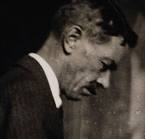
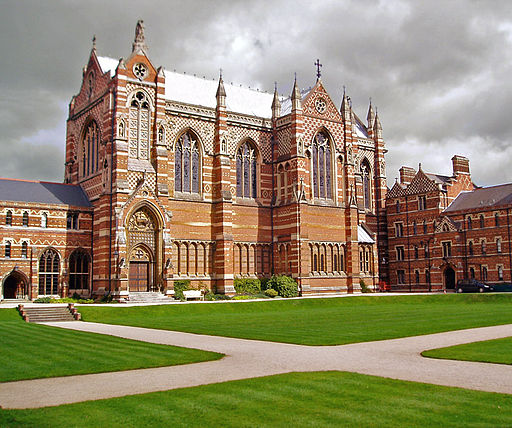
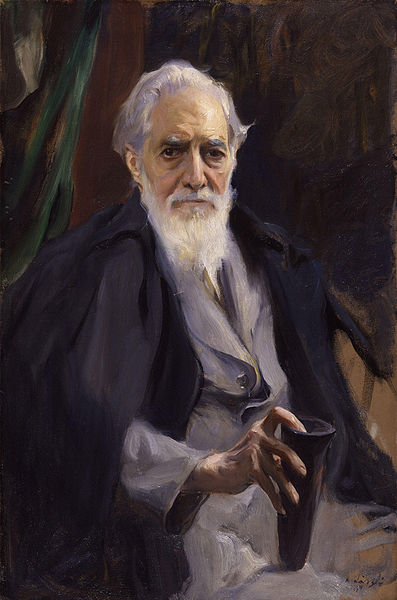
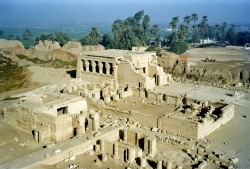
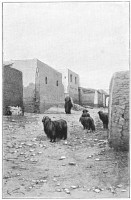
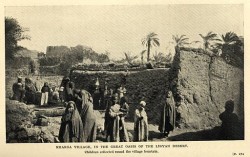
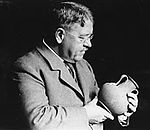
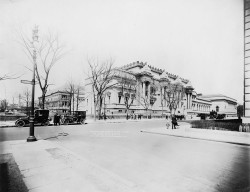
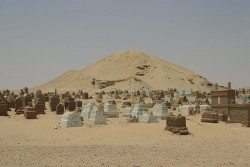
 By
By